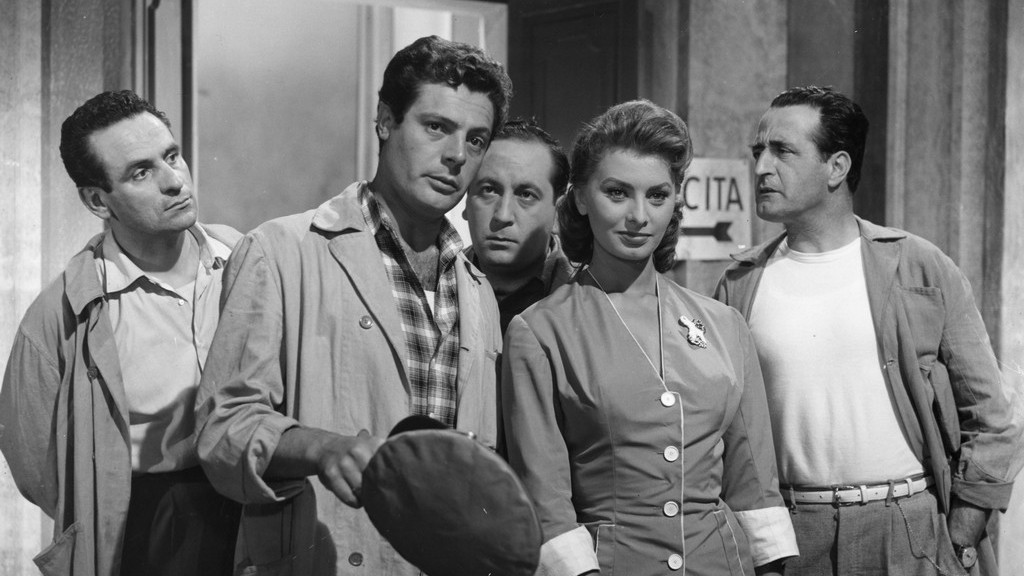FOREVER SOPHIA

Curated by Emiliano Morreale
Sophia Loren was a symbol of Italy, or rather of a vision of Italy that could be easily exported, thanks to her exotic, Mediterranean appeal. Throughout the course of an extremely long career whose (extended) high point was between the 1950s and the 1970s, she was an image of an ‘Italian’ that looked exotic even to Italians themselves. So, at the beginning of her career she often played eccentric roles (Aida, Cleopatra, Honoria). Thanks to Vittorio De Sica in L’oro di Napoli and Alessandro Blasetti in Peccato che sia una canaglia, her physique became the expression of an exuberant Italy that still bore traces of the post-war Neorealist gaze but also looked towards the economic miracle.
Of all the actresses from this period, she alone managed to survive into the following decade, and indeed that became her most fruitful period. Her husband, Carlo Ponti, built an extraordinary production edifice around her, and, as we all know, such operations never work out unless the actor in question is embraced by the public. Once again, it was De Sica who, with the help of Mastroianni and the scriptwriter Zavattini, invented a perfect star for the era. A star for an Italy that now fascinated international audiences, in both auteur films and lumbering ‘Hollywood on the Tiber’ epics, as well as in an American cinema at the tail end of its golden age and looking with interest towards Europe. La ciociara, Ieri, oggi, domani, Matrimonio all’italiana (Marriage Italian Style) are therefore the mirror images of El Cid, Arabesque or A Countess from Hong Kong. The master of political cinema, Francesco Rosi, directed her in a film that is simultaneously a colourful fable and a journey into Italy’s popular roots: C’era una volta…, in which she once again plays a princess and a commoner. When Hollywood was finally reborn and set off in a different direction, Loren continued to dominate an Italy whose cinema had become ever more scant and dull. She also delivered the greatest role of her mature years in Ettore Scola’s Una giornata particolare.
Sophia Loren is also a unique example of the interconnections between star and industry, in a moment in which Italian cinema reached the pinnacle of its international prestige. Thus, her star persona found itself confronted by a paradox: lavish, colour glamour photos imbued with a common touch. Her plebeian energy was also capable of incarnating elegant and regal characters. Something that led from reality to dreams, but which continually had to return to reality to replenish its power. In a 1964 article, Mario Soldati contrasts her with a completely different model, that of Audrey Hepburn. He compares Loren to “an ancient Persian miniature” (again, exoticism) and writes that if the English actress is “an intellectual symbol”, then Loren constitutes a more paradoxical “visceral symbol”.
Emiliano Morreale
Program
Saturday 25/06/2022
11:00
Arlecchino Cinema
UNA GIORNATA PARTICOLARE
UNA GIORNATA PARTICOLARE
Emiliano Morreale
Saturday 25/06/2022
15:30
Europa Cinema
ARABESQUE
ARABESQUE
Introduction curated by Cinema Ritrovato Young
Sunday 26/06/2022
11:00
Arlecchino Cinema
IERI, OGGI, DOMANI
IERI, OGGI, DOMANI
Monday 27/06/2022
11:00
Arlecchino Cinema
Too Bad She’s Bad
Too Bad She’s Bad
Emiliano Morreale
Tuesday 28/06/2022
10:00
Arlecchino Cinema
La riffa – Episodio di Boccaccio ’70
La riffa – Episodio di Boccaccio ’70
Tuesday 28/06/2022
11:15
Arlecchino Cinema
PANE AMORE E…
PANE AMORE E…
Emiliano Morreale
Wednesday 29/06/2022
11:00
Arlecchino Cinema
HELLER IN PINK TIGHTS
HELLER IN PINK TIGHTS
Pierre Eugène (Cahiers du cinéma)
Thursday 30/06/2022
11:00
Arlecchino Cinema
LA CIOCIARA
LA CIOCIARA
Friday 01/07/2022
11:00
Arlecchino Cinema
ARABESQUE
ARABESQUE
Saturday 02/07/2022
11:00
Arlecchino Cinema
C’ERA UNA VOLTA
C’ERA UNA VOLTA
Thursday 07/07/2022
21:45
Piazza Maggiore
FOREVER SOPHIA: LA RIFFA/MARA
FOREVER SOPHIA: LA RIFFA/MARA
Vincenzo Mollica


